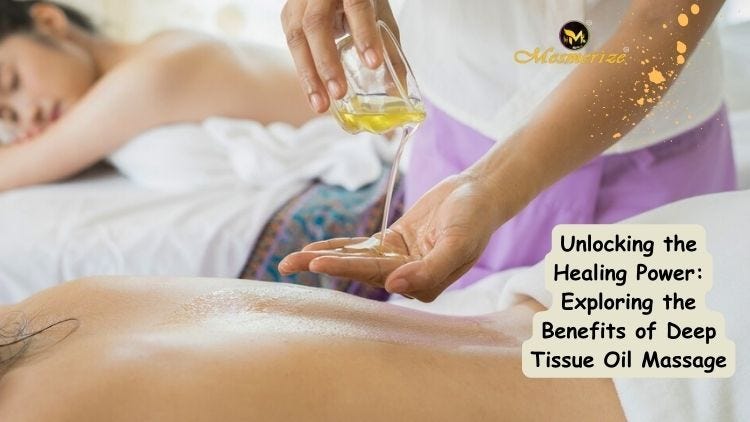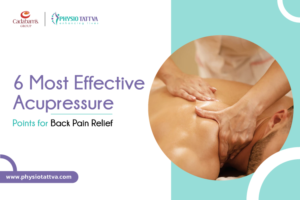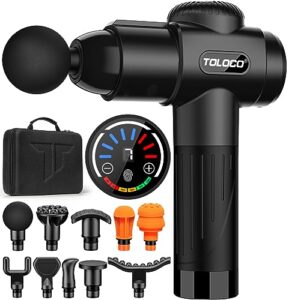Massage works on muscles by stimulating blood flow, loosening tight tissues, and reducing muscle tension. It helps to release built-up tension and increase flexibility, promoting relaxation and improving overall muscle function.
Massage therapy has been used for centuries to alleviate muscle pain and tension, and it continues to be a popular treatment today. By using various techniques such as kneading, rubbing, and stretching, massage therapists can target specific muscle groups to reduce pain and improve mobility.
Additionally, the manipulation of soft tissues during a massage can also help to break down scar tissue and adhesions, promoting faster recovery from injuries. Overall, massage works on muscles by increasing circulation, releasing tension, and promoting healing, making it an effective therapy for overall muscle health and well-being.
The Science Behind Massage Therapy
Muscle Response To Massage
Massage therapy stimulates blood flow, promoting muscle relaxation and reducing tension. The pressure applied to the muscles triggers the nerves, signaling the body to release endorphins – natural painkillers and mood enhancers. Furthermore, it helps to break down adhesions, promoting flexibility and range of motion.
Effects Of Deep Tissue Healing
Deep tissue massage targets the inner layers of muscles and fascia. It involves applying firm pressure and slow strokes to relieve chronic muscle tension. By reaching the deeper layers, it helps to improve blood circulation, reduce inflammation, and break down scar tissue, ultimately facilitating the healing process. This technique also aids in lowering blood pressure and enhancing overall well-being.
Understanding Deep Tissue Massage
Techniques And Pressure Points
Deep tissue massage involves various techniques that focus on reaching deeper layers of muscles and connective tissue. The therapist uses firm pressure and slow strokes to alleviate tension, targeting specific problem areas to release muscle knots and reduce inflammation. By applying direct pressure to specific points, the therapist can stimulate blood flow and restore proper muscle function.
Benefits For Muscle Recovery
Deep tissue massage offers numerous benefits for muscle recovery, aiding in the healing process and promoting overall well-being. This type of massage can help in breaking up scar tissue, reducing muscle stiffness, and enhancing flexibility. By addressing chronic muscle tension, deep tissue massage can improve mobility and alleviate chronic pain, enhancing overall physical performance.
The Role Of Circulation In Muscle Healing
Massage plays a vital role in promoting muscle healing by improving blood circulation. When muscles are injured or tense, proper blood flow is crucial for the recovery process.
Improving Blood Flow
Massage enhances blood circulation which aids in reducing inflammation and promoting healing of muscle injuries.
Enhancing Oxygen And Nutrient Delivery
Massage therapy increases oxygen and nutrient delivery to muscles, supporting faster recovery and better function.

Credit: m.facebook.com
Releasing Tension And Knots
Massage therapy is an effective way to release tension and knots in your muscles, providing relief from pain and discomfort. By targeting specific areas of tightness and applying pressure, a massage therapist can help ease muscle tension and work out any knots that may have formed.
Breaking Down Adhesions
Adhesions are bands of rigid tissue that form between muscle fibers, causing them to stick together. The pressure applied during a massage can help break down these adhesions, allowing your muscles to move more freely. This can improve your range of motion and promote better overall muscle function.
Relieving Muscle Stiffness
Massage therapy is particularly beneficial for relieving muscle stiffness. Whether it’s due to overuse, injury, or prolonged periods of inactivity, stiff muscles can limit your mobility and cause discomfort. A skilled massage therapist can use various techniques to target and release tension, reducing stiffness and improving flexibility.
When muscles are tense or knotted, the blood flow to the affected areas can be restricted. Massage therapy helps to increase blood circulation, bringing fresh oxygen and nutrients to the muscles. This can aid in the repair and rejuvenation of muscle tissue, promoting faster healing and reducing recovery time.
It’s important to remember that everyone’s muscles and bodies are unique, so the effects and duration of relief from massage therapy may vary. Additionally, massage therapy should not be considered a substitute for medical treatment. Always consult with a healthcare professional if you have any underlying medical conditions or concerns.
Post-massage Recovery And Self-care
Experience post-massage recovery and self-care, focusing on how massage effectively targets muscle tension and promotes healing and relaxation. By enhancing blood flow and releasing muscle knots, massages facilitate the restoration of muscle function and alleviate soreness, aiding in overall physical well-being.
Hydration And Stretching
After a rejuvenating massage, it is important to focus on post-massage recovery and self-care to optimize the benefits of your session. To facilitate the healing process and maintain muscle health, there are two vital aspects to consider: hydration and stretching.Hydration
Hydration plays a crucial role in the post-massage recovery process. Water is the elixir of life, and post-massage, it helps flush out toxins that have been released from the muscles during the session. Proper hydration replenishes the body’s fluid levels, supporting tissue repair and minimizing any possible soreness or discomfort that may occur after a massage. It is recommended to drink water regularly throughout the day following your massage, ensuring your body remains hydrated and ready for continued recovery.Stretching
Stretching is an excellent way to maintain and enhance the effects of a massage. After your session, your muscles are relaxed, making it an opportune time to engage in gentle stretching exercises. Stretching helps lengthen and elongate the muscles, reducing the chances of muscle stiffness and promoting flexibility. Incorporating stretching into your post-massage routine can also aid in preventing muscle imbalances and injuries. Remember to focus on all major muscle groups and hold each stretch for at least 15 seconds, aiming for a comfortable, gentle stretch sensation.Continued Maintenance For Muscle Health
To optimize muscle health and prolong the benefits of your massage, it is essential to engage in continued maintenance. Regular exercise, such as cardiovascular activities and strength training, can help in preventing muscle tension and promoting overall muscle health. Incorporating foam rolling into your routine can also aid in releasing any residual muscle tightness. Additionally, practicing deep breathing techniques and mindfulness exercises can help reduce stress levels, which can further contribute to muscle relaxation and overall well-being. In conclusion, post-massage recovery and self-care are crucial for maximizing the benefits of a massage session. Hydration and stretching play key roles in facilitating healing and maintaining muscle health. By staying properly hydrated, engaging in gentle stretching exercises, and incorporating continued maintenance techniques, you can optimize the effects of your massage, promoting a healthy and balanced body.
Credit: m.facebook.com

Credit: medium.com
Frequently Asked Questions On How Does Massage Work On Muscles
What Happens To Muscles When You Massage Them?
Massage increases blood flow, releasing tension and reducing soreness in muscles. It also promotes relaxation and can improve flexibility and range of motion.
How Does Massage Release Muscles?
Massage releases muscles by increasing blood flow, reducing tension, and promoting relaxation. It also stimulates the release of endorphins, which are natural pain relievers. Additionally, it helps to break down adhesions and scar tissue, and improve flexibility and range of motion in the muscles.
Why Do Muscles Feel Good When Massaged?
Massage helps muscles feel good by increasing blood flow, releasing tension, and reducing inflammation and soreness.
Is Massaging Your Muscles Good For You?
Massaging your muscles is good for you. It helps relieve tension, improve blood circulation, and reduce pain. Regular massages can also enhance flexibility and promote relaxation. Overall, muscle massage is beneficial for your body and well-being.
Conclusion
Massage therapy aids in improving blood flow, reducing muscle tension, and promoting relaxation. By targeting specific trigger points, massages can alleviate pain and enhance flexibility. Regular sessions can enhance overall well-being and support recovery from injuries. Massage therapy is a holistic approach to muscle health.


